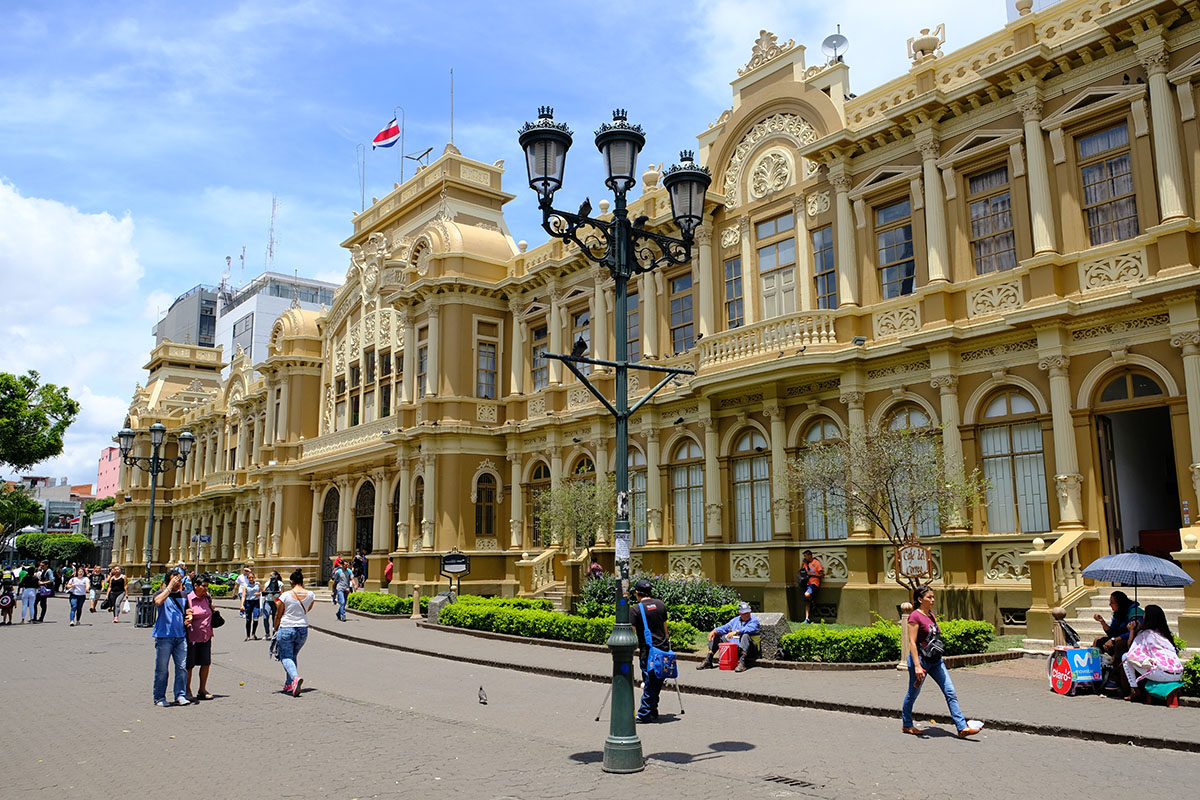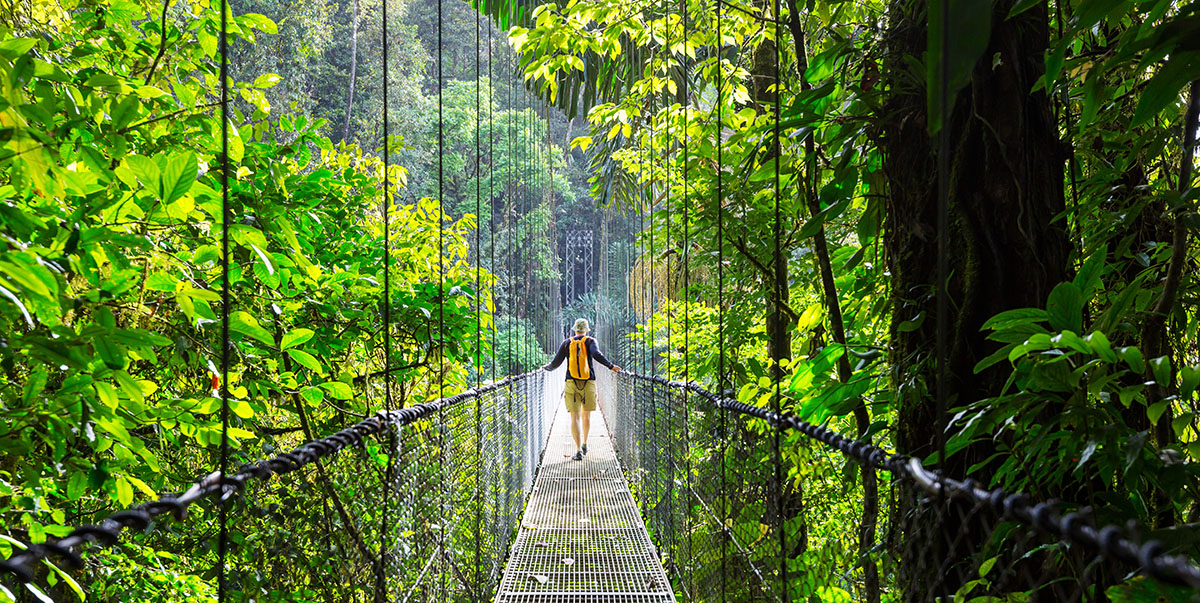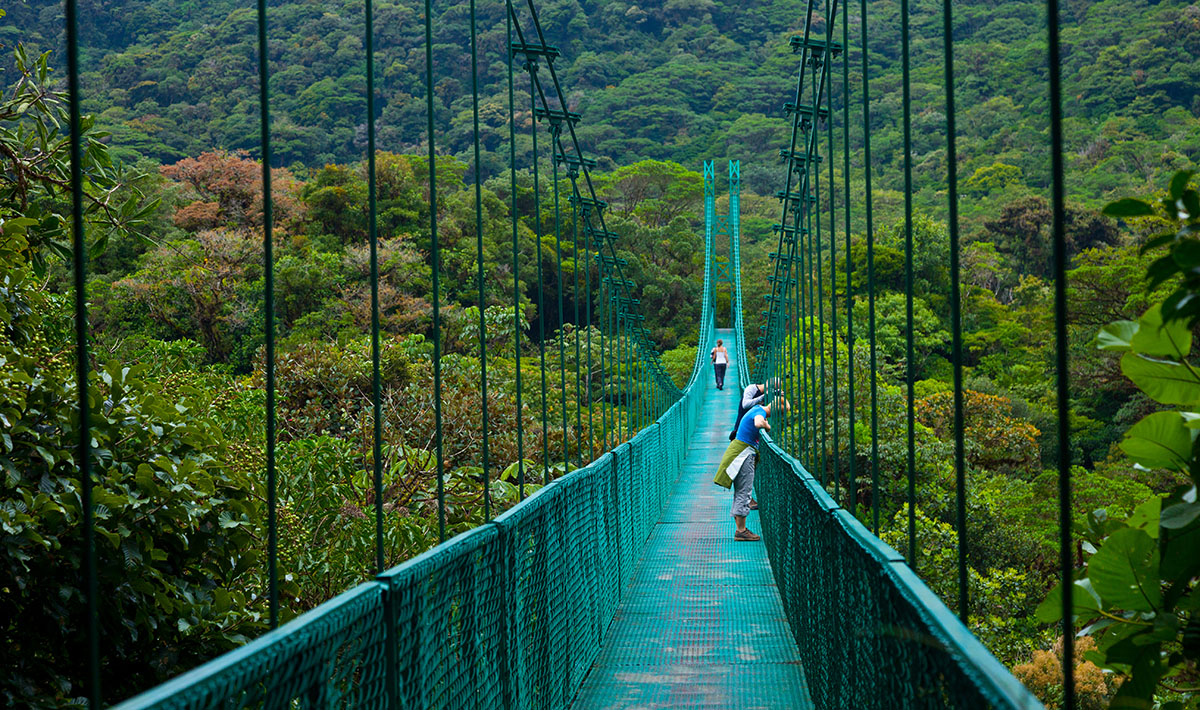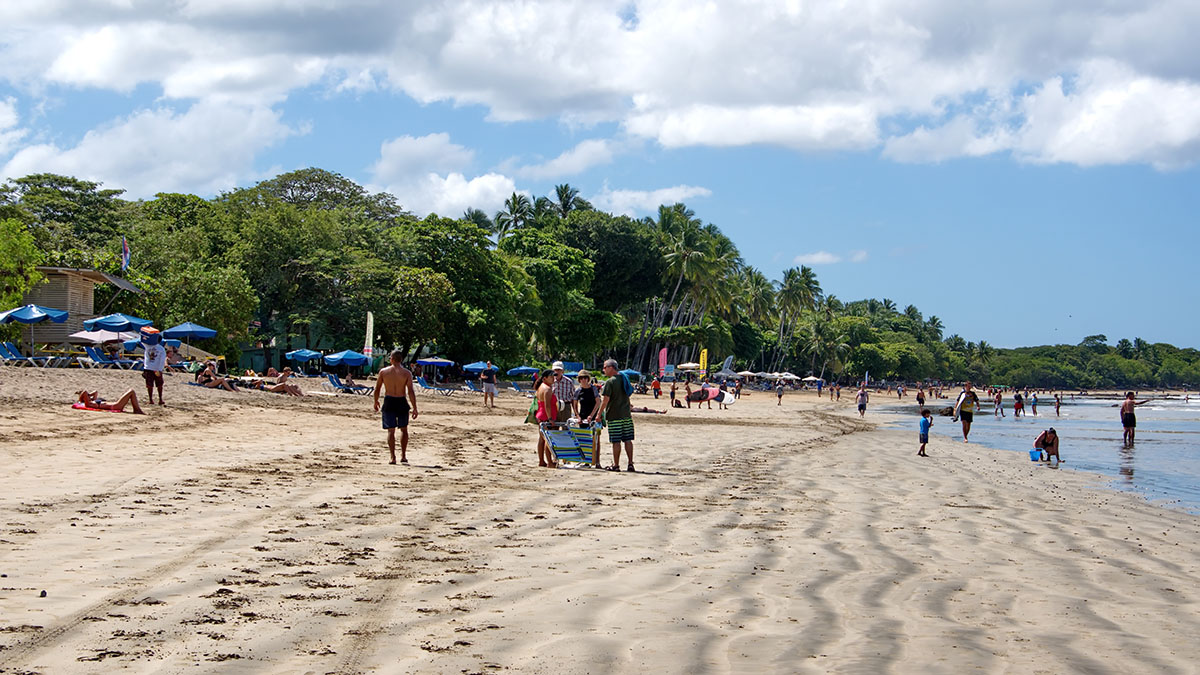Costa Rica has emerged as a premier destination for digital nomads seeking a blend of natural beauty, sustainability, and relatively developed infrastructure. This Central American paradise, known for its “Pura Vida” lifestyle, offers remote workers a unique combination of tropical beaches, mountainous cloud forests, abundant wildlife, and a commitment to environmental conservation that’s unmatched in the region.
Costa Rica’s Visa Options for Digital Nomads
Costa Rica offers several visa options for remote workers, with the Rentista Visa and the newer Digital Nomad Visa being the most relevant.
The Rentista Visa Program
The Rentista Visa has long been a popular option for those looking to stay in Costa Rica long-term:
Key Details of the Costa Rica Rentista Visa:
- Duration: 2 years, renewable
- Income Requirement: Proof of stable monthly income of at least $2,500 for the visa duration
- Financial Guarantee Options: Either a $60,000 deposit in a Costa Rican bank OR proof of $2,500 monthly income for 24 months
- Application Fee: Approximately $250 plus additional costs for document authentication
- Processing Time: Typically 2-3 months
- Path to Permanency: Can lead to permanent residency after 3 years
- Dependents: Spouse and children under 25 can be included
- Work Restrictions: Cannot work for Costa Rican companies but can operate foreign businesses or work remotely
- Official Website: Costa Rica Immigration Department
The Digital Nomad Visa
In August 2021, Costa Rica introduced a specific Digital Nomad Visa (officially called “Law to Attract Workers and Remote Providers of International Services”):
Key Details of the Digital Nomad Visa:
- Duration: 1 year, renewable for an additional year
- Income Requirement: $3,000/month for individuals or $4,000/month for families
- Application Process: Typically simpler than the Rentista
- Tax Benefits: Exemption from income tax and import duties on certain equipment
- Processing Time: Designed to be processed within 15 days
- Health Insurance: Proof of health insurance coverage required
For many digital nomads, the specialized Digital Nomad Visa may be preferable due to its streamlined process and tax benefits, though the Rentista still offers advantages for those seeking a longer-term path to residency.

Why Choose Costa Rica as a Digital Nomad
Costa Rica offers numerous advantages that have made it increasingly popular among location-independent professionals:
- Political Stability: One of Central America’s most stable democracies
- Safety: Relatively low crime rates compared to neighboring countries
- Healthcare: High-quality, affordable healthcare system
- Natural Beauty: Incredible biodiversity with beaches, rainforests, and mountains
- Sustainability Focus: Leader in environmental conservation and renewable energy
- Climate Options: From tropical beaches to cooler mountain towns
- Lifestyle: The relaxed “Pura Vida” philosophy promotes well-being
- Growing Expat Communities: Established digital nomad scenes in several areas
- Relative Proximity to North America: Short flights from major US cities
- Adventure Activities: Surfing, hiking, wildlife viewing, and more
- Internet Infrastructure: Generally reliable in developed areas

Top Destinations for Digital Nomads in Costa Rica
San José and Central Valley: The Urban Hub
The capital and surrounding areas provide the most metropolitan experience:
- Connectivity: Best internet infrastructure in the country
- Coworking: Multiple established spaces (Collaborate, Selina, etc.)
- Living Costs: Moderate by Western standards (~$1,500-2,000/month)
- Urban Amenities: Shopping malls, restaurants, nightlife
- Transportation: Central location with public transit options
- Climate: Pleasant year-round temperatures due to elevation
- Healthcare: Access to the country’s best medical facilities
- Culture: Museums, theaters, and cultural events
Notable neighborhoods for digital nomads include Escazú (upscale, expat-friendly), San Pedro (university area, younger vibe), and Santa Ana (growing tech hub).
Tamarindo: The Beach Town Hub
This Pacific coast destination has become a digital nomad hotspot:
- Beach Lifestyle: Direct access to beautiful beaches
- Surf Culture: World-class surfing opportunities
- Established Expat Scene: Large English-speaking community
- Digital Infrastructure: Relatively reliable internet
- Coworking Options: Several spaces catering to remote workers
- Walkability: Compact town center with essentials in walking distance
- Dining Scene: Diverse international and local restaurants
- Nightlife: Active social scene with bars and events
- Tropical Climate: Warm year-round with distinct dry and green seasons
Santa Teresa/Mal País: The Bohemian Surf Paradise
Located on the Nicoya Peninsula, known for its laid-back vibe:
- Stunning Beaches: Pristine Pacific coastline
- Wellness Focus: Yoga retreats, holistic health centers
- Growing Digital Scene: Increasing number of remote workers
- Conscious Community: Health-focused, environmentally aware population
- Surf Culture: Excellent breaks for all skill levels
- Digital Challenges: Less reliable infrastructure (improving)
- Authenticity: Less developed than other coastal areas
- Notable Drawbacks: Dusty roads in dry season, limited services
Puerto Viejo: The Caribbean Vibe
On the Caribbean coast, offering a completely different flavor:
- Cultural Diversity: Afro-Caribbean influence in food, music, and culture
- Relaxed Pace: Even slower lifestyle than the Pacific side
- Lush Rainforest: Jungle meets beach setting
- Wildlife Viewing: Sloths, monkeys, and tropical birds
- Lower Costs: Generally more affordable than Pacific coast
- Growing Digital Scene: Emerging nomad community
- Connectivity Challenges: Less reliable infrastructure
- Rainy Climate: Higher precipitation than the Pacific coast
Monteverde/Santa Elena: The Cloud Forest Retreat
For nature lovers seeking cooler temperatures:
- Elevation: Cooler climate at higher altitude
- Biodiversity: Famous cloud forest reserves
- Quieter Lifestyle: Focus on nature and tranquility
- Eco-Tourism: Sustainable focus
- Growing Infrastructure: Improving digital connectivity
- Adventure Activities: Ziplines, hiking, wildlife viewing
- Educational Opportunities: Conservation projects and workshops
- Limitations: More isolated, fewer amenities
Practical Considerations
Internet and Connectivity
Costa Rica’s internet infrastructure varies significantly by location:
- Urban areas typically offer reliable high-speed options (50-100 Mbps)
- Coastal and rural areas may have more limited options (10-30 Mbps)
- Mobile data is widely available through providers like Kolbi, Movistar, and Claro
- Major power outages can occur during the rainy season
- Always have backup connectivity options in more remote areas
Accommodation Options
- Short-term: Airbnb, hostels with private rooms, boutique hotels
- Medium to long-term: Apartment and house rentals, coliving spaces
- Budget range: $500-800/month for basic accommodations, $800-1,500/month for comfortable options in desirable areas
- Popular platforms: Encuentra24, Facebook groups for specific towns, local real estate agents
Seasonal Considerations
Costa Rica has two primary seasons that significantly impact the digital nomad experience:
- Dry Season (December-April): Peak tourist season, higher prices, more crowded, easier travel, dusty in some areas
- Green/Rainy Season (May-November): Lower prices, fewer tourists, lush landscapes, potential connectivity issues during storms
- Pacific and Caribbean coasts have slightly different weather patterns
Many digital nomads plan their stays around these seasons, with some preferring to be in the Central Valley during the rainier months.
Transportation
- Public buses connect major towns and cities but are slow
- Domestic flights serve various regions through Nature Air and Sansa
- Rental cars provide the most flexibility but require 4WD in many areas
- Ride-sharing services like Uber operate in San José and some tourist areas
- Many beach towns are navigable by foot, bicycle, or ATV
Banking and Finance
- U.S. dollars are widely accepted but at varied exchange rates
- Local currency is the Costa Rican Colón (CRC)
- Major credit cards are accepted in tourist areas but cash is king in rural locations
- ATMs are available in most tourist destinations
- Some banks require appointments for non-account holders
- Banking procedures can be bureaucratic and time-consuming
Coworking and Cafe Culture
- Established coworking spaces in San José, Tamarindo, Santa Teresa, and other nomad hubs
- Day passes typically range from $10-20
- Monthly memberships from $120-250 depending on location
- Cafes with good wifi can be found in tourist areas but may have limited hours
- Some hotels and hostels offer workspace areas for guests or day visitors
Health and Insurance
- High-quality healthcare at lower costs than the United States
- Public healthcare system (Caja) available to residents
- Private hospitals and clinics in major cities and tourist areas
- Health insurance required for visa applicants
- Travel insurance with strong medical coverage recommended
Challenges to Consider
While Costa Rica offers many advantages, potential challenges include:
- Cost of Living: Higher than other Central American countries
- “Gringo Pricing”: Foreigners often pay premium rates
- Internet Reliability: Inconsistent in more remote areas
- Bureaucracy: Government processes can be slow and paper-heavy
- Road Conditions: Many secondary roads are unpaved or poorly maintained
- Rainy Season Limitations: Heavy rains can affect travel and connectivity
- Limited Street Addresses: Navigation can be challenging
- Petty Crime: Theft can be an issue in tourist areas
- Banking Friction: Opening accounts and managing finances can be complicated
Conclusion
Costa Rica represents an excellent option for digital nomads seeking a blend of natural beauty, established infrastructure, and a lifestyle focused on well-being and sustainability. The Rentista Visa provides a solid pathway for longer-term stays, while the newer Digital Nomad Visa offers streamlined entry with specific benefits for remote workers.
Whether you’re drawn to the urban amenities of San José, the surf culture of coastal towns, or the biodiversity of cloud forests, Costa Rica offers diverse environments to suit different digital nomad preferences. The country’s commitment to conservation means you can work surrounded by some of the world’s most extraordinary natural settings.
While certain challenges exist regarding infrastructure and cost, the combination of political stability, safety, healthcare quality, and natural beauty continues to make Costa Rica one of the most appealing destinations in Latin America for location-independent professionals. The “Pura Vida” philosophy might just be the perfect antidote to digital burnout.
Ready to make your digital nomad dreams a reality? Download our comprehensive Digital Nomad Visa Guide for detailed requirements and official resources for each destination.
Connect with fellow location-independent professionals by joining our exclusive Sojrn Digital Nomad Community for ongoing support, insider tips, and updates to enhance your borderless lifestyle.



